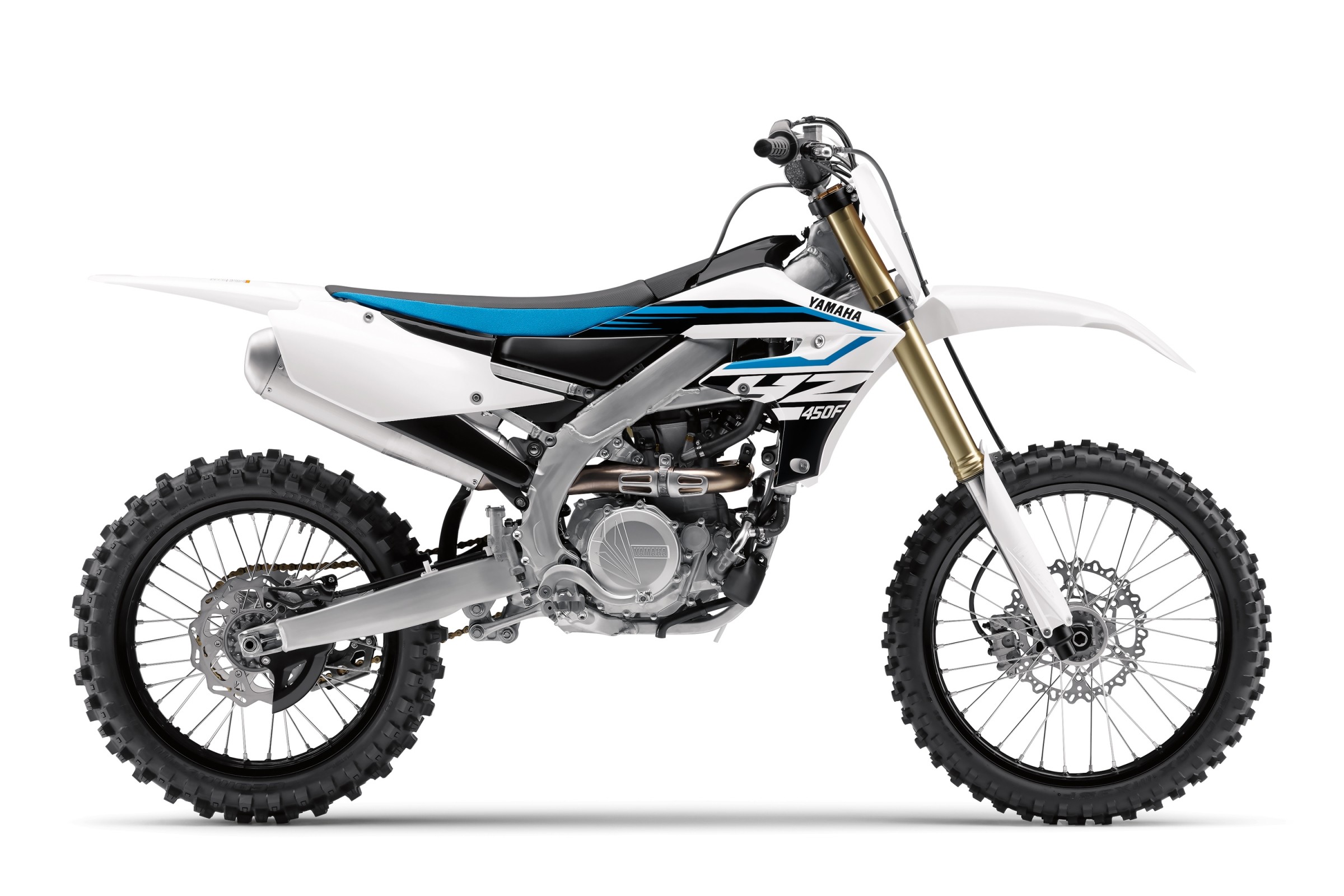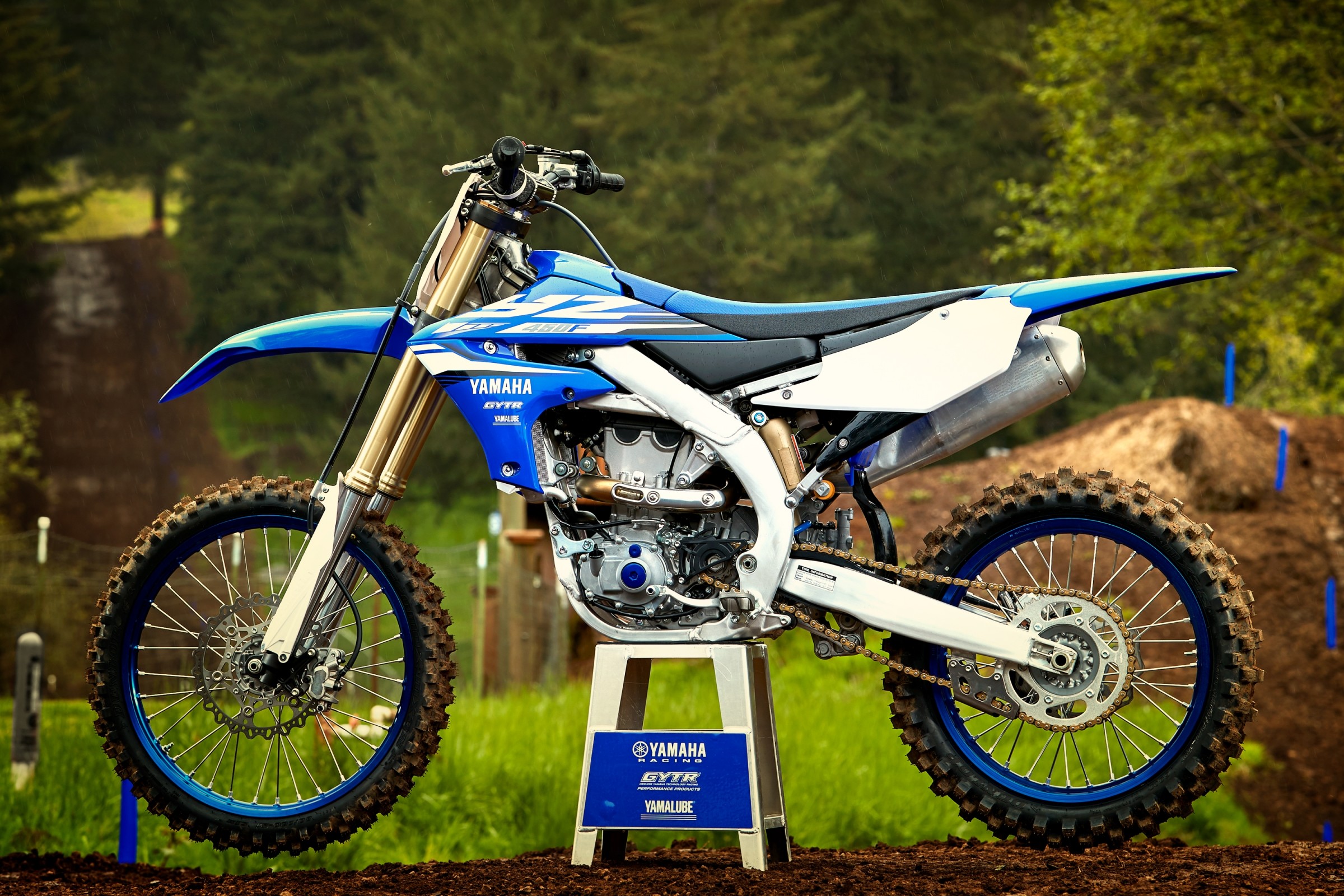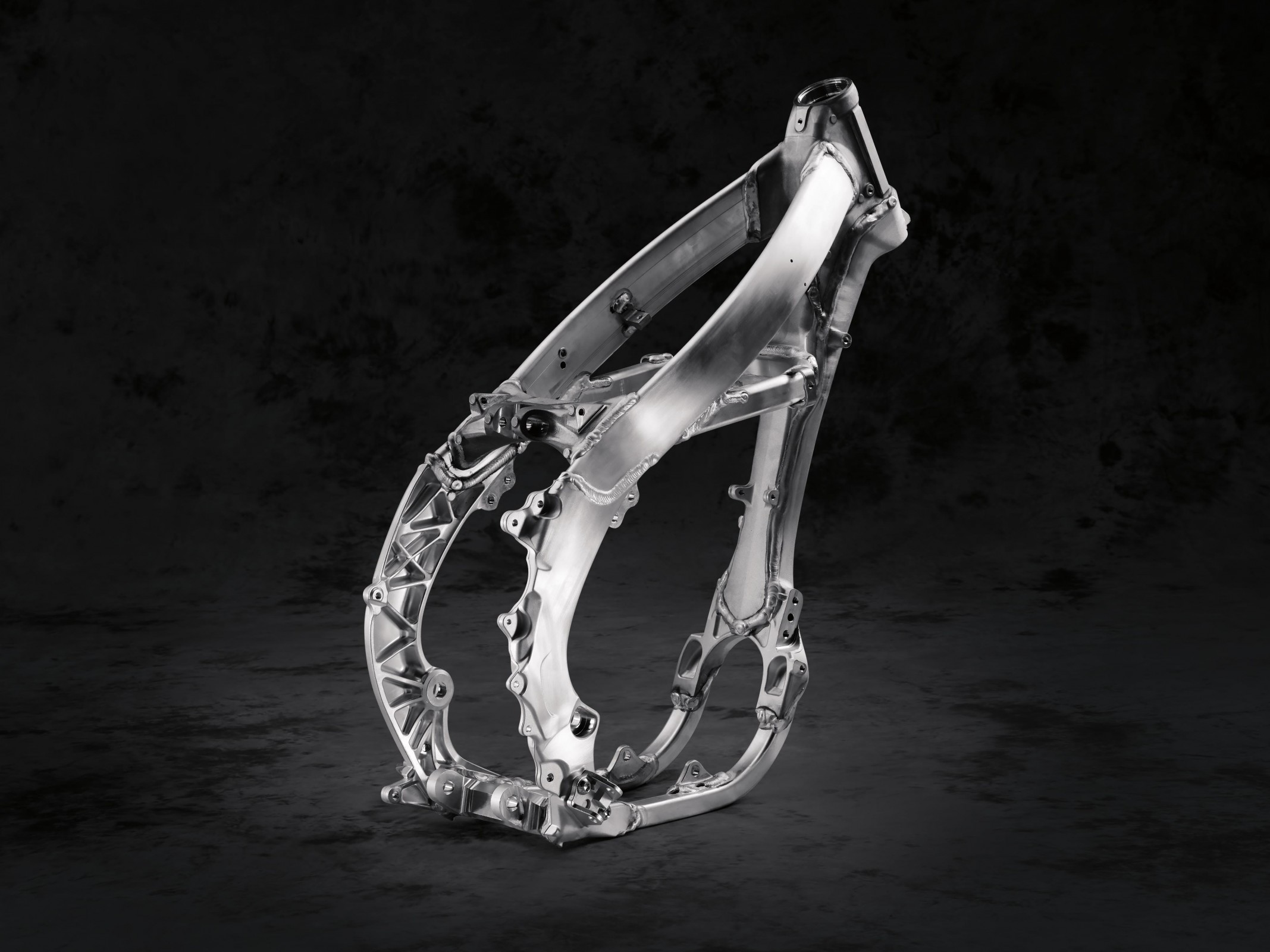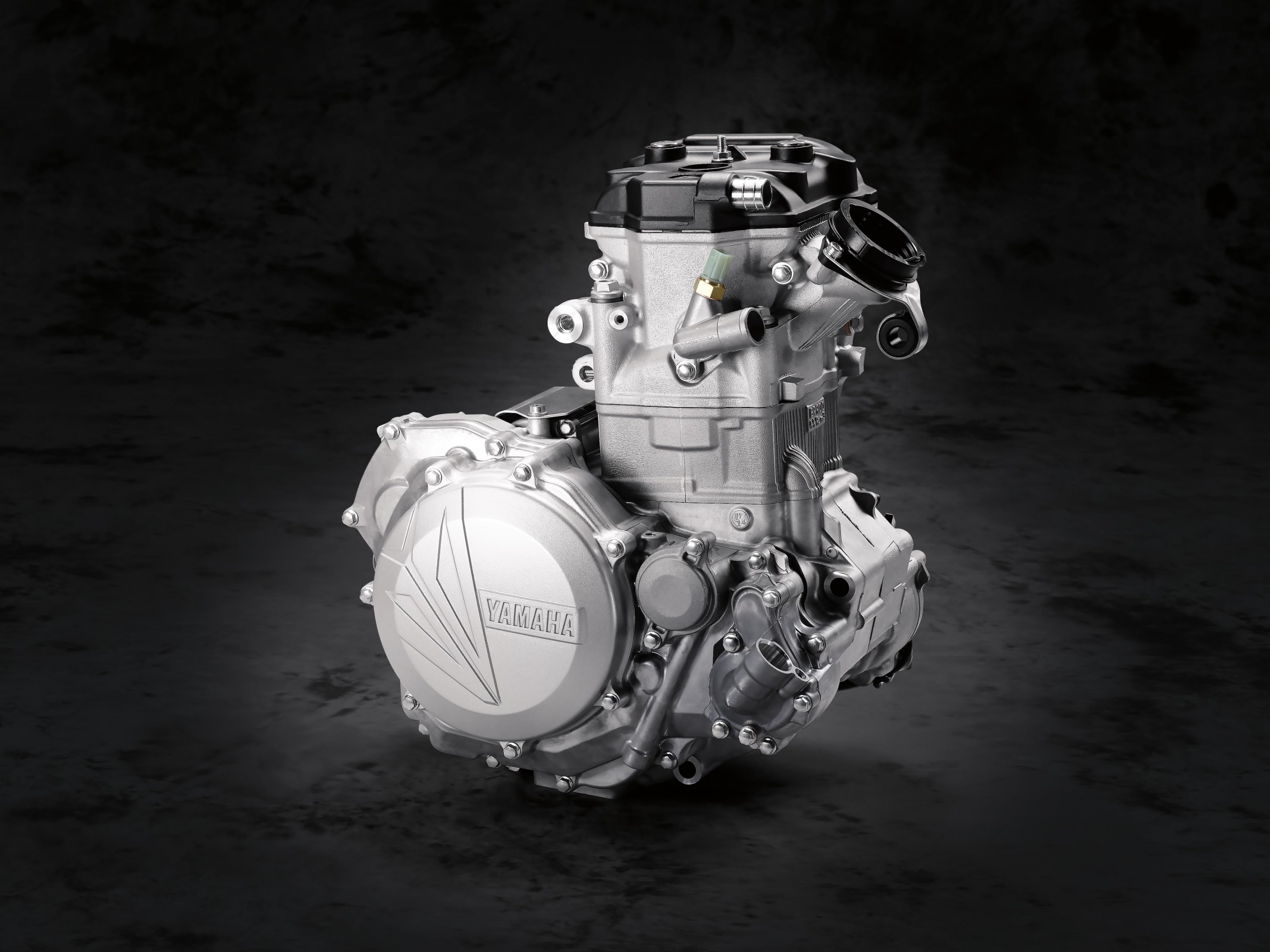Yamaha released their all-new 450 this week and for fans who bleed blue there is plenty to be excited about. As always, the proof is in the pudding (or, in this case, in the riding), but at first glance the 2018 YZ450F appears to have changes to all of the things that critics have said need to be addressed. And there were some issues.
A glance down the gate at a pro level LCQ gives you a good idea of what bike works well in stock trim. After all, these guys are trying to be competitive on mostly stock equipment so it behooves them to choose the best platform. In the 250 Class you will notice an overwhelming number of Yamahas. In the 450 class, not so much. That has everything to do with the feel and handling of the bikes, which we’ll get into more below. It’s interesting to note that Yamaha is the only manufacturer that uses the exact same frame on both its 250F and 450F. It may seem confusing why the 250 handles well and the 450 struggled when they share the same exact frame, but it is always easier to get a smaller bike with less weight and power to handle well. The negative feedback you feel with 62 horsepower might not be noticeable with 42 horsepower. Yamaha has tried to make tweaks over the years to improve the handling of the 450, but for 2018 they went back to the drawing board.
The history of Yamaha’s thumper is interesting. From the full works bike YZM400 Doug Henry rode in 1997 to the first factory production YZ400F in 1998 that Henry and Jimmy Button raced to the 2018 model, Yamaha has seen some ups and downs. The first few bikes were revolutionary and the first of their kind. They went through a period where they had some turning issues, but the Yamaha thumpers always had good stability. Then for 2010, Yamaha redesigned the bike with this backwards power plant design (airbox in front of the engine, which is the reverse of other bikes).
With this design, Yamaha found a way to maximize horsepower, but they have really struggled to get the handling sorted out. For the past few years I’ve always been blown away by how much power the Yamaha makes, how good the fork feels, and also how I continued to struggle to get the chassis to feel comfortable when pushing hard. The bike felt like it had a short wheelbase and the weight transition from front to back unsettled the chassis entering and exiting corners. I could get the front end to feel comfortable, but the back end never felt planted and it wanted to dance around. It was also way too wide from the radiator shrouds to the rear of the bike as well. I understand that isn’t exactly a rave review of the previous model, but it is the way most test riders felt.
For 2018, Yamaha appears to have addressed all of those issues and more. The chassis, for starters, includes an all-new, compact bilateral beam frame designed to address the flex/rigidity balance. Yamaha’s press release says, “Redesigned upper frame bracing, rear frame spars and all new engine mounts centralize mass and increase rigidity on lateral, horizontal and vertical axis to provide an ideal balance between cornering feel and straight-line rigidity.” What this says is that Yamaha has put in some work to try to address the “unplanted” feeling of the previous-generation machine. We’ll see how well it works when we finally get a chance to ride it.
It’s important to note that suspension and handling don’t necessarily go hand-in-hand. The Yamaha has had excellent suspension for the past several years, but it didn’t equate to good handling. The design of the chassis, the motor characteristics, suspension brand/model/settings all work congruently and reflect overall bike handling and feel. This has been the Achilles heel of the modern YZ450F and time will tell if the 2018 turns that around.
The motor on the Yamaha has never been a problem—plenty of horsepower on tap. Nevertheless, Yamaha made changes to improve power and the delivery, making it faster yet easier to ride. Keep in mind that there is some residual drag when you have electric start and that needs to be offset by better engine performance to keep from noticing the loss.
Per Yamaha: “The all-new cylinder head is lighter and the cylinder slant is more upright to work with the bike’s updated frame for optimized front weight distribution. Inside, the engine features new cam shaft profiles, a new crankshaft, a stronger high-compression “box bridge” piston design with a DLC-coated (Diamond-like Carbon) piston pin, and now breathes through a new 44mm Mikuni® throttle body. Together, these updates give the rider an ideal balance of 450cc class power with exceptional control and response. The transmission and clutch have been overhauled for a more direct connection as well as enhanced durability. Revised gears with a wider surface area, updated clutch plates and a stiffer outer pressure plate all combine to boost controllability and durability.”
The other big change is the addition of electric start. I think the writing was on the wall once KTM added electric start and reduced weight. Yamaha followed suit and put their bike on a diet, resulting in a motorcycle with electric start that is still lighter than its predecessor. If you’ve never ridden a bike with electric start, trust me, you’ll love it. It makes chopping down on a kickstarter over and over seem barbaric.
The list of changes goes on and on and you can read through it all here. I’m really excited to get the 2018 YZ450F on the track and see how the changes feel when the rubber meets the dirt. Stay tuned!








